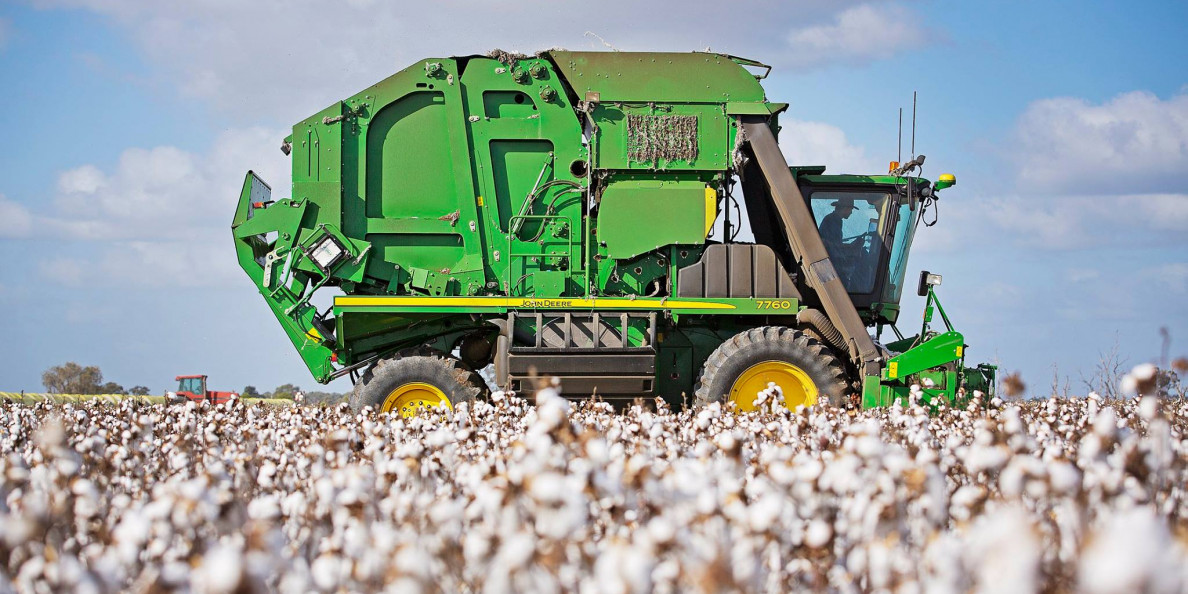USDA’s April World Agricultural Supply and Demand Estimates numbers for cotton reflected the negative demand impact of the global pandemic. This has bearish implications for both old and new crop.
The world cotton balance sheet adjustments had minimal changes to beginning stocks and typically small production adjustments for this time of year, e.g., a 200,000-bale increase in Brazil. However, projected cotton consumption and trade was lowered substantially due to the observed indicators and likely recessionary impacts of the COVID-19 pandemic. Projected world cotton imports and exports were lowered by roughly three million bales. All of the major exporters and importers reflected decreased exports and imports, respectively.
Projected world cotton consumption was more dramatically reduced with over 7.5 million fewer bales in April compared to March. Projected world ending stocks reflected these previous adjustments with a 7.9 million bale month-over-month increase.
About 60% of this increase in ending stocks was in China, India, and the U.S., all of which are supporting their domestic cotton prices. Similarly, 63% of the current level of world ending stocks are also in those three countries. Hence, the normal price implications of increasing and burdensome ending stocks may be buffered in this situation.
Domestically, the April WASDE saw three adjustments to the U.S. cotton balance sheet, and they were also major changes. First, U.S. domestic consumption was lowered 100,000 bales, to 2.9 million. Second, U.S. exports were decreased 1.5 million bales, to 15.0 million. Both of these adjustments were attributed to the global economic slowdown due to the pandemic. The resulting 1.6 million bale reduction in total consumption went straight to the bottom line, raising U.S. 19/20 ending stocks from 5.1M to 6.7M. Ending stocks-to-use likewise shifted from a neutral 26% to a burdensome 37%.
ICE cotton futures did not immediately react to these bearish adjustments. Perhaps agricultural commodity markets were supported by strength in the oil market that week. Perhaps all commodity markets, and the speculators that dominate them, are more under the influence of unprecedented monetary stimulus by central banks, including the U.S. Federal Reserve. Perhaps the dynamics of pre-report and pre-holiday trading that week kept the lid on a sell-off in cotton futures prices this week.
Nevertheless, the longer term damage to cotton consumption by shuttered businesses and sheltering consumers will take many months to resolve. If there was a near term medical quick fix to the spread and effects of COVID-19, I would expect only a partial relief in commodity and equity markets. The “fear and panic” portion of the decline in cotton prices might get us back to 60 cents. But the repairs to cotton’s global supply chain, like the demand relationships for apparel, home furnishings, cloth, yarn, and cotton lint, will take longer to normalize. Hence a return to profitable price levels may not happen during 2020.
From a marketing standpoint, both old crop and new crop cotton prices have fallen to the level of the federal program price support. In government-speak, the adjusted world price (AWP) is below the 52-cent loan rate. This makes for positive loan deficiency payment (LDP) rates for those who sell their cotton in the cash market (being careful to maintain beneficial interest). This situation also implies potential marketing loan gains (MLG) for those who put their cotton in (and redeem from) the CCC loan. So the worst having happened, there isn’t much sense in paying for more downside price protection.
For additional thoughts on these and other cotton marketing topics, please visit my weekly on-line newsletter at http://agrilife.org/cottonmarketing/.
Source: farmprogress.com

